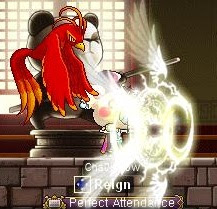1) Adaptations of a crab
 |
| Crab and its habitat |
 |
| zoom in on crab |
Crabs have an outermost shell, or carapace, that acts as a protective armor to help the crustacean protect its vital organs during an attack from potential predators. Also, for each variety of crab, they have a different outer shell color as it helps them blend into their surroundings. For example the crab stated above has similar colours as the rock and is hard to notice from a distance.
Besides that, as shown in the crab above, they have eyes that are mounted on flexible, lengthy stalks which enables the crab to be able to see to the side, front and back in its search for food or predators.
Next, crabs have large front claws, or chelipeds, and these pincer like claws are crucial for the crab’s defense and collection of prey for food.
Finally, crabs have antennas and many legs that enables them to smell, feel, and move safely away from predators and find food swiftly.
2) Abiotic factors
 |
| Typical mangrove soil |
From the picture, we can tell that in this particular instance, the soil is very moist due to the constant tidal waves that sweeps through the mangroves, the pH is low due to the decaying leaves, the available oxygen is scarce due to the soil being dense, the nutrients available is high due to the many trees that provide it, and the light is low due to the many particles in the soil.
3) Population interactions: mutualism
 |
| Insects on the flower |
 |
| Flower |
Mutualism is an interaction between two or more species, where species derive a mutual benefit, meaning that both parties get a benefit. One or both species involved in the interaction may be obligate, meaning they cannot survive in the short or long term without the other species.
In the picture above, the insects help to pollinate the flower, and the insects get food and nutrients as well. Therefore, both parties benefit and this therefore can be said to be Mutualism.
4) Population interactions: commensalism
Mangrove trees produce a lot of leaves and other organic matter like all other trees. However, instead of accumulating these leaves and organic matter in the soil, the leaves fall in the water, where they rot and provide food for microbes and many tiny animals in the water. Furthermore, the roots of the mangroves also provide shelter because they block our large birds and other predators that are eager to prey on them.
 |
| Mangrove trees in a swamp |
Because there is lots of food in mangrove areas, and good shelter among the mangrove roots, some kinds of fish come there to reproduce. Therefore it can be said that the mangroves are a critical habitat upon which these species depend for survival, and if something happens to the mangroves, the future of these kinds of fish will be affected.
However, the Mangroves do not really depend on these animals in turn in any way in their growth, therefore this sort of relationship the mangrove has with its marine life is commensalism, where the marine animals benefit while the tree remains neutral.
5) Competition
 |
| Plants competing for resources |
In the above picture, the main area of competition which is obvious to us is in gathering available sunlight. The plants grow as tall as they can, trying to gather as much sunlight at the expense of nearby, shorter plants.
6) Population interactions: exploitative relationships(parasitism)
 |
| Plant growing on tree |
In the above picture, we can see the shoot of the young plant coiled around a tree. The plant that grow on a tree feeds of the nutrients of the host plant in terms of nutrients, water and food for its own use to grow. The tree does not gain any benefits, and instead loses its resources to this plant, therefore it can be said that the plant is the parasite that feeds of the host tree.

Passing your Postal Exam is required in case you have to work for the USPS GuideToExam Discover test taking tips, score information, and Postal Exam Prep. Use our free Post Office practice tests.
ReplyDelete